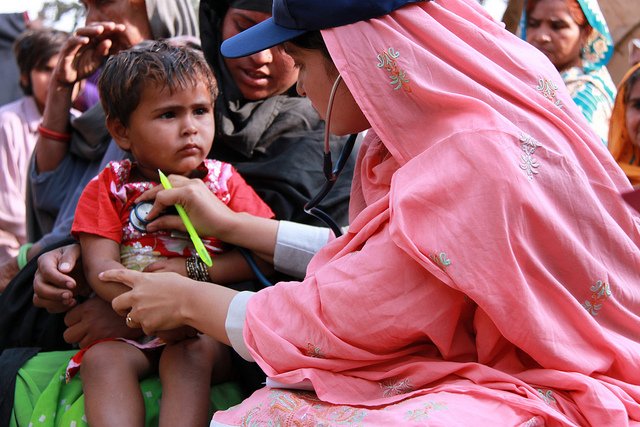A lot of Pakistani women die during childbirth. The World Health Organization puts the rate at 170 per 100,000, while the CIA claims the number to be as high as 260 per 100,000.
By contrast, most of Europe has a maternal mortality rate below 10 per 100,000.
Why is Pakistan’s rate so high?
A major problem is lack of access to clean water and good sanitation systems.
68 million Pakistanis do not have access to improved sanitation (toilets and pipes that don’t leak) and 16 million do not have access to clean water.
Diseases spread when open defecation is common or sanitation systems are faulty and contaminate water. During childbirth, women are especially susceptible to infection.
The other main reasons for death during childbirth are severe bleeding and induced high blood pressure and pre-existing conditions becoming triggered.
This is exacerbated by the fact that many Pakistanis, especially those living in rural areas, are unable, or do not want, to go to hospitals.
Some women are unable to go because the closest hospital is far away and they might not have any way or money to travel.
Some women don’t want to go because they are discouraged from seeing male doctors, and there is a notorious lack of female doctors in the country.
When women give birth at home, they are at much higher risk of getting a lethal infection or dying from birth complications.
As WHO notes, nearly all deaths during childbirth can be been prevented if proper care is taken. But 99% of such deaths occur in developing countries that lack resources. In 28 countries representing a third of the global population, less than 50% of births take place with a skilled attendant nearby. 69% of maternal deaths happen in these places.
Some women also die days or weeks after childbirth because they do not receive proper follow-up care that can identify and treat complications.
In 2013, 289,000 women died during childbirth and 3 million infants died before their first month of life.
Pakistan is trying to change this grim narrative in the Khyber Pakhtunkhwa province--where just 50% of women receive prenatal care and 25% receive postnatal care--with an elegantly simple solution.
First, 500 female doctors from Lady Health Workers have been recruited to help out at 1,680 rural health care facilities.

Next, the government turned to a cash incentive program. Women can earn up to $50 USD for going to see a doctor.
The program encourages 3 visits prior to giving birth, and 2 post-birth visits. Each time, a woman gets $10.
This money lets women pay for a way to get to facilities and the female doctors get rid of the stigma.
Since the start of 2015, the program has reached 5,678 Pakistanis!
One doctor in the district of Mardan told the Inter Press Service, “We have recorded a 50 per cent increase in visits of the pregnant women at the outpatients department of the hospital because of the money provided by the government.”
Those are some stunning results--and the program seems to be leading to a culture shift.
As women enter the program, they appreciate the experience and encourage their friends to take advantage of it.
Overtime, prenatal and postnatal care may simply be the norm.
This is clearly a model that the whole world can adopt and is yet another definitive example of why cash programs work.